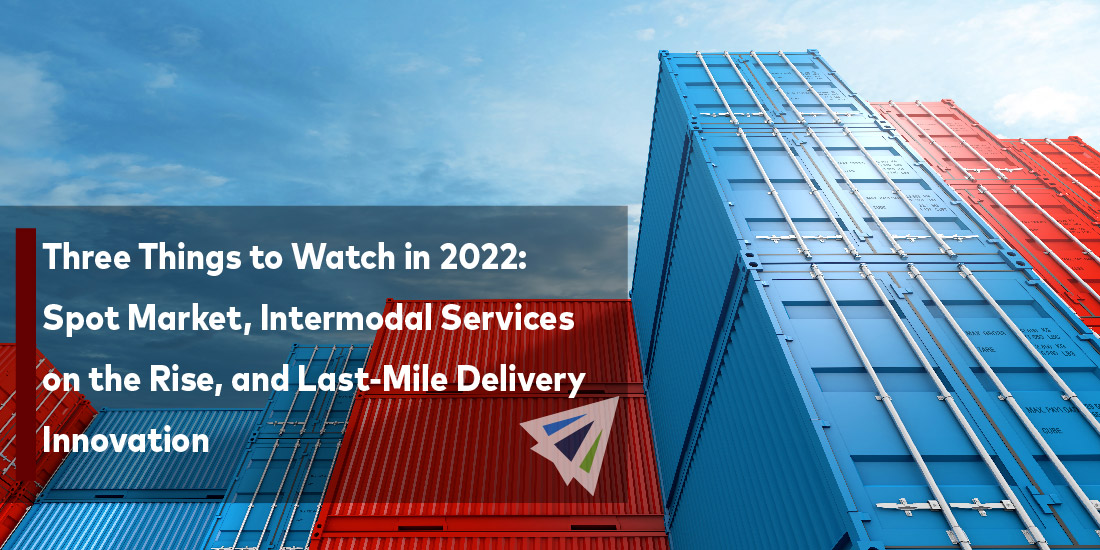Three Things to Watch in 2022: Spot Market, Intermodal Services on the Rise, and Last-Mile Delivery Innovation
We are at the three month mark of 2022 and with that come three things to watch in 2022: the spot market, intermodal services on the rise, and last-mile delivery innovation.
Spot Market
A spot rate is a one-off rate for transporting a shipment by sea or air freight. It is important to note that spot rates are usually only valid for one shipment and often have restrictions on a specific vessel, aircraft or date range, and current market conditions.
Spot rates look drastically different now than they did in 2019—pre-pandemic. Currently experts are seeing transpacific spot rates from Asia to U.S. west coast looking to be a little under $10,000 per forty-foot equivalent unit (FEU). However, that does not include the additional priority shipment fees of $1,400-$7,500 that some cargoes are paying. Experts are anticipating spot rates to fall towards the end of 2022.
When evaluating the spot market and rates, shippers must think and determine what is important to them in their current shipping situation – price or space and availability? Additionally, this has a direct impact on consumers, as prices for shipping container rates increase, so will the increase in prices for consumers.
Intermodal Services on the Rise
After a successful 2021 (even with a dip in the second half of the year), services for rail intermodal in 2022 are looking somewhat optimistic. Rail intermodal is the transportation of shipping containers and truck trailers by rail. This in turn allows railroads to provide their customers cost-effective, environmentally-friendly service for almost anything that can be loaded into a truck or container, as defined by the Association of American Railroads.
The start of 2022 for rail traffic has been fairly on par with 2021, as the first two months of the year saw nearly a 4% increase in total U.S. carload traffic (1,817,594 carloads) and a slight dip in intermodal units by 7% (2,031,760 intermodal units) – from the same period as last year, the AAR reported. Rail traffic for the week ending of February 26th saw carloads and intermodal units totaling 485,190 down slightly (0.3%) compared to the same week last year, the AAR additionally reported.
If port and rail congestion cools down, it will allow the overall intermodal market in 2022 to start fixing some of the prominent damage that occurred in 2021. Some industry experts are informing shippers that they may see increases in rates, due to inflation on fuel, infrastructure, and labor.
Last-Mile Innovation
Last-mile delivery is when a product that is on a warehouse shelf gets put on a truck, and then to the customer’s doorstep. Which is the point or “last mile” at which the package finally arrives at the customers door, defined by Business Insider.
As consumers continue to shop from home, the expectations of delivery to their doorstep has increased. Trying to meet the demands of reliable and efficient delivery for consumers, carriers are required to also meet intensified environmental, social, and governance (ESG) standards.
Now, self-driving delivery vehicles and drones are becoming increasingly attractive as an investment for the future of trucking and bringing along innovation for last-mile delivery. It is likely that delivery robots, drones, and self-driving vehicles will start making many of these last-mile delivery drop-offs in the near future.
Going Forward
If you would like more information regarding this topic, contact our team at InterlogUSA and we will be happy to assist you on any questions or comments you may have. In addition, we have our weekly market updates that can provide you with relevant freight news, updates, developments across the industry, and more.
